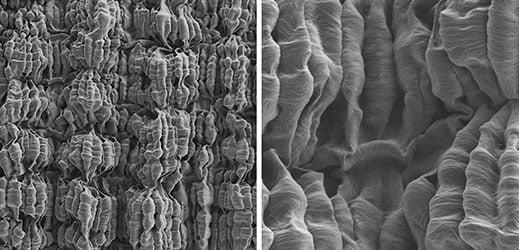It’s hard to know exactly how technologists might use electrically conductive fibers that can perform at a high level even when stretched to 15 times their length. But it’s possible the fibers, unveiled today by an international group of researchers, could help open new applications in robotics, find use in exoskeletons, make their way into new kinds of textiles, or bring power to sensor arrays that monitor the structural health of important curved surfaces like those on the outside of aircraft.

Lots of progress has been made in recent years toward new kinds of electronic devices that can bend, flex, and stretch. But the creators of the new fibers say there is still a need for better elastic conducting materials to serve as wires, sensors, and for use in deformable energy storage devices and displays.
The new fibers, made by wrapping carbon nanotube sheets (see “Light-as-Air, Heatproof Nanotube Muscles”) around a rubber core, are relatively inexpensive and straightforward to manufacture, says Ray Baughman, a professor of chemistry and director of the Nanotech Institute at the University of Texas at Dallas. Baughman, who led the research, says they could be particularly useful for things like extendable robotic arms, or as the basis of sensor arrays that monitor the state of aircraft that “morph” to adapt to changing flight conditions.
Don’t settle for half the story.
Get paywall-free access to technology news for the here and now.